Tires – Plastic-pollution – Brics – PLA 10-06-2023 - Arhive
Tires – Plastic-pollution – Brics – PLA
-AIMPLAS is currently engaged in the RECICAUTXU Project, a research initiative aimed at developing industrial processes for utilizing end-of-life tires (ELTs) in the construction sector
The project focuses on creating a new generation of composite materials that incorporate devulcanized rubber particles obtained from ELTs and other cross-linked materials. These innovative materials can be used to produce environmentally friendly films, sheets, and profiles with enhanced properties.
Existing treatment methods for ELTs, such as thermal decomposition, pyrolysis, incineration, and shredding, have various drawbacks that render them unsustainable. To promote the principles of the circular economy, alternative solutions have been proposed in recent years, including the blending of shredded rubber from tires with other materials like plastic to create secondary materials for new industrial products.
However, significant advancements are still required in these technologies as the materials produced thus far do not meet the necessary quality standards.
The RECICAUTXU Project is financially supported by the Valencian Innovation Agency (AVI), and AIMPLAS collaborates with the Department of Transport Engineering and Infrastructure of the Universitat Politècnica de València (UPV) on this endeavor. The project aims to incorporate devulcanized rubber particles into thermoplastic polyolefin matrices to produce extruded elastomeric products that exhibit excellent elastic properties and impact resistance.Tires – Plastic-pollution – Brics – PLA
These products can find applications in various construction elements, transport infrastructure, building interiors, sports facilities, playgrounds, signage, and road safety systems.
Vicent Martínez, a researcher in the Mechanical Recycling Area and the head of the project at AIMPLAS, explains, “Rubber waste currently has limited applications, necessitating the expansion of transformation processes for this recycled material to discover new high-value products. Through this project, we are striving to enhance the recovery of this waste through innovative processes that yield more sustainable materials within a circular economy framework.”
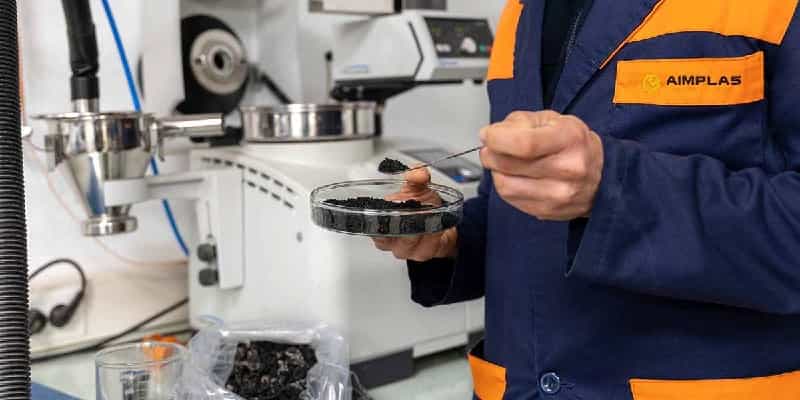
Credit : Aimplas
-Johnson Matthey, a global leader in sustainable technologies, is partnering with Fujian Zhongjing Petrochemical Group to combat plastic pollution in China
They will supply Fujian Zhongjing with state-of-the-art butanediol (BDO) technology, a crucial component for producing bio-degradable plastics (PBAT). The project involves the construction of three separate BDO plants in phases, making it the world’s largest BDO facility. With Johnson Matthey’s technology, Fujian Zhongjing, one of the largest private petrochemical enterprises in Fujian Province, aims to produce an impressive 600,000 metric tonnes of PBAT per year. Tires – Plastic-pollution – Brics – PLA
PBAT is a bio-degradable plastic used in compostable packaging that naturally decomposes through the action of microorganisms like fungi and bacteria. This collaboration marks a significant step in addressing the plastic waste problem in China. Dr. Mark Su, President of Greater China at Johnson Matthey, emphasizes the importance of plastic alternatives like PBAT in combating pollution, expressing confidence in the positive impact their technology can have on creating a cleaner world.
The announcement coincides with the recent meeting of the Intergovernmental Negotiating Committee for Plastics in Paris, where global efforts to develop an international treaty on plastic pollution were discussed. The United Nations estimates that the world currently produces nearly 430 million tonnes of plastic annually, a number projected to triple by 2060 without intervention. In 2020, China alone generated around 60 million tonnes of plastic waste, with only 16 million tonnes being recycled, according to the China National Resources Recycling Association. These figures have prompted the Chinese government to implement new laws and regulations to restrict plastic waste and promote the use of biodegradable alternatives.
Dr. Su highlights the energy savings and operational improvements enabled by their technology, emphasizing the collaboration with customers to ensure the most efficient and effective solutions are implemented in compliance with strict permitting protocols in China.
Weng Shengjin, Chairman of Zhongjing Petrochemical Group, expresses their commitment to increasing investment in energy conservation, carbon reduction, and emission reduction to achieve their goals.Tires – Plastic-pollution – Brics – PLA
John Edwards, Britain’s HM Trade Commissioner for China, recognizes the significance of this project, citing three key reasons. Firstly, it is a massive commercial undertaking, nine times larger than any other BDO project globally. Secondly, it contributes to the vital green transition by meeting the growing demand for bio-degradable plastics. Lastly, it serves as a noteworthy example of economic and commercial partnership between the UK and China, benefiting both countries and the planet.

Creditb : Johnson Matthey
-Formation of BRICS and its Unfulfilled Potential
The formation of BRICS took place at the turn of the 21st century, signifying a distinctive international association comprised of five emerging global economies: Brazil, Russia, India, China, and South Africa. This alliance was established with the aim of harnessing shared potential for growth and modernization in the global economy. However, despite numerous opportunities, BRICS has largely fallen short of realizing its true potential, primarily due to the intricate trilateral divide among India, China, and Russia.
BRICS: An Overview BRICS was initially created in 2006 as BRIC, with the inclusion of South Africa in 2010 transforming it into BRICS.
The combined population of the BRICS countries currently accounts for approximately 42 percent of the world’s population, about 23 percent of global GDP, and almost 17 percent of world trade.Tires – Plastic-pollution – Brics – PLA
The fundamental mission of BRICS encompasses reforming global financial institutions, strengthening cooperation in vital areas such as trade, finance, technology, and investment, as well as fostering mutual cultural understanding and collaboration. Additionally, the alliance aims to serve as a counterbalance to traditionally Western-centric international institutions and frameworks.
Unrealized Goals While BRICS holds great theoretical promise, several factors have contributed to its failure to fully unleash its anticipated potential.
Economic Heterogeneity and Divergent Interests: The participating countries possess significantly distinct economic compositions, stages of economic growth, and national interests. For instance, China and India are renowned for their burgeoning technology sectors, whereas Russia remains heavily reliant on natural resources, and Brazil and South Africa heavily depend on commodity exports. Such economic heterogeneity often leads to diverse and occasionally conflicting national interests, hindering effective cooperation.
Lack of a Definitive Plan: BRICS lacks a comprehensive and enforceable roadmap to fulfill its commitments. The absence of a secretariat or formal constitution limits its ability to effectively strategize and execute coordinated initiatives.Tires – Plastic-pollution – Brics – PLA
International Geopolitical Climate: The international geopolitical landscape also impacts the ability of BRICS countries to act as a unified front. The entrenched position of Western countries in the global economy and international institutions poses a significant challenge to the aspirations of BRICS nations to assume a prominent role.
Tripartite Challenge: India, China, and Russia One of the major obstacles faced by BRICS countries lies in the complex trilateral dynamics among India, China, and Russia, which further complicates the alliance.
China-India Relations: Geopolitical tensions, primarily stemming from longstanding border disputes, China’s strategic alliance with Pakistan, and competitive implications in Asia, strain the relationship between China and India. These issues present a major impediment to effective cooperation within BRICS.
Russia-China Relations: Although Russia and China stand united against the West, their collaboration within BRICS encounters difficulties. China’s economic activities create a power imbalance and push Russia away. Russia also expresses concerns over China’s growing influence in Central Asia, a region traditionally seen as Russia’s sphere of influence.
India-Russia Relations: India and Russia once shared a strong strategic partnership. However, as India has gradually moved closer to the United States in defense procurement, while Russia has fostered closer ties with China and Pakistan, the once-strong bond between India and Russia has strained. This dynamic affects their cooperation within BRICS. Tires – Plastic-pollution – Brics – PLA
These geopolitical undercurrents significantly impede the ability of BRICS countries to function as a cohesive entity and achieve their visionary goals.
Conclusion BRICS represents a bold endeavor to recalibrate global economic power dynamics. However, factors such as economic heterogeneity, lack of a definitive agenda, the international geopolitical climate, and internal divisions among India, China, and Russia have prevented the alliance from reaching its peak potential. For BRICS to emerge as a major player on the global stage, internal harmony, strategic clarity, and a steadfast commitment to overcoming individual differences in pursuit of common interests are imperative. It will be intriguing to observe how these countries navigate their complex relationships as they strive to establish BRICS as a formidable force in the global economy.
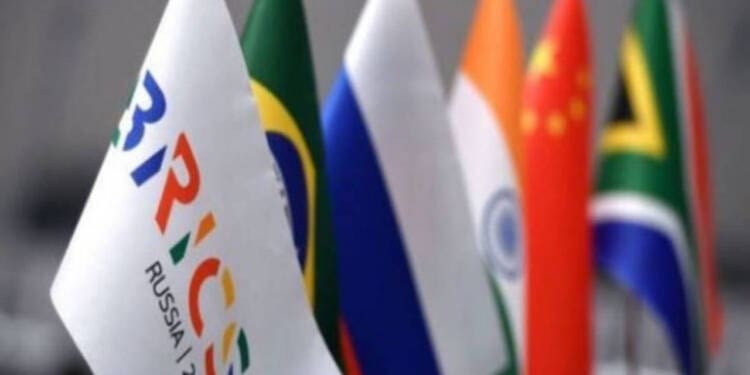
-New film packaging material is 100% recyclable and VOC free
A trio of Japanese companies has announced the joint development of a mono-material film packaging materials and manufacturing process that, say the companies, offering 80% lower CO2 emissions compared to conventional materials and that are completely free of volatile organic compounds.
The material, created by Toray Industries, Mitsui Chemicals, and Kumagai Co., is fully recyclable. Targeted applications include refillable pouch solutions for foods, shampoos, and detergents.
During the manufacturing process of traditional film packaging material, petroleum solvent-based inks are used to print text, images, and other information on plastic films and in adhesives to laminate plastic films. Not only do these processes all consume energy, the solvents release VOCs. Moreover, the multi-material structure of most laminated plastics meant these could not be recycled, leading to their frequent incineration as waste.
VOC emissions from petroleum solvents in film packaging materials production and their impact on work environments have long raised concerns. Also, as companies seek to reduce the carbon footprint of their processes and products, ways to develop both more energy efficient production methods and circular products are increasingly being investigated. Tires – Plastic-pollution – Brics – PLA
The joint development of the new material saw the application of Toray’s proprietary Imprima offset printing plate that uses electron beam-cured printing inks requiring less electricity and no thermal drying. Mitsui Chemicals provided the materials expertise and Kumagai developed the packaging. The result is a lightweight, transparent, solvent-free, recyclable and easily processable material suitable for a diversity of packaging applications that the partners are now set to commercialise, as demand for solutions of this kind continues to grow.
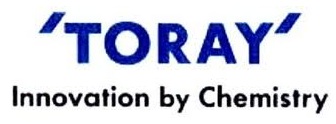
Credit : Toray
-Corbion announced earlier today that ‘it will not pursue a new PLA bioplastics plant’ in Grandpuits, France, through its TotalEnergies Corbion PLA joint venture, following its review of the investment case, said Sustainableplastics
In September 2020, TotalEnergies announced plans to invest more than €500 million to convert its Grandpuits refinery into a zero-crude platform. The project would comprise the development of facilities for biofuels, bioplastics and plastic waste recycling as part of TotalEnergies strategy to get to net-zero emissions by 2050.
As part of this project, Total Corbion PLA also announced in September 2020 plans to build a 100 000 tonnes-per-annum biobased polylactic acid (PLA) plant at Grandpuits – the first in Europe – after its first 75,000 metric tonne/year plant was successfully launched in 2018 in Thailand. NextChem, a subsidiary of Italy-based industrial group Maire Tecnimont S.p.A. had been awarded a contract by Total Corbion PLA to carry out a Front-End Engineering Design (FEED) for the plant.Tires – Plastic-pollution – Brics – PLA
TotalEnergies issued a separate statement, also today, saying that it ‘noted the decision taken by its partner Corbion not to pursue the bioplastic production project, which will now be discontinued.’
However, the company added that ’in the light of the new investments announced today and others to come, TotalEnergies confirms the maintenance of 250 jobs at the site, in line with the commitments it made in September 2020’.
These investments included the doubling of the production of sustainable aviation fuel (SAF) and the development of low carbon energies at the Grandpuits site. The doubling of SAF production will bring the site’s annual production capacity to 285,000 tonnes.
The development of low carbon energies at the Grandpuits zero-crude platform, will include the construction of a biomethane production unit with an annual capacity of 80 gigawatthours (GWh), equivalent to the annual demand of 16,000 people. It will be supplied with organic waste from the biorefinery, and will prevent the emission of almost 20,000 tons of CO2 every year.
“These new projects further strengthen the site’s conversion, toward sustainability, decarbonisation and the circular economy,” said Bernard Pinatel, President, Refining & Chemicals at TotalEnergies. Tires – Plastic-pollution – Brics – PLA
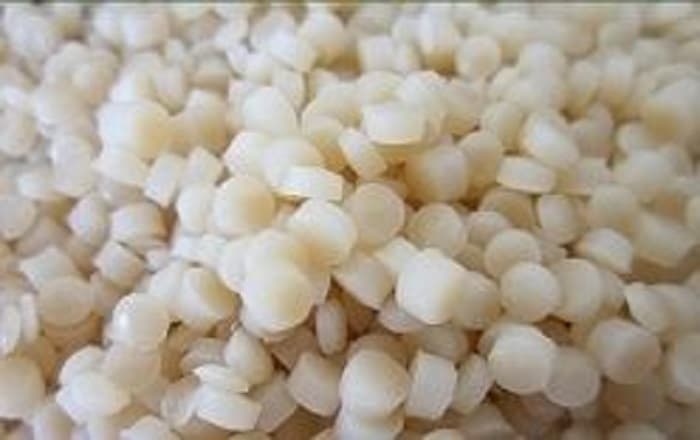
Credit : Total Corbion
-Polyolefin and PVC prices have experienced a decline in recent months due to weak demand and improved supply
This downward pressure on prices can be attributed to lower feedstock costs, ongoing weakness in demand, and an increasing surplus in supply. In April, polyolefin prices decreased as a result of a €40/tonne reduction in both C2 and C3 contract prices. Base PVC prices also fell by more than the expected €20/tonne impact from the lower ethylene price, primarily due to the persistently weak demand. On the other hand, polystyrene prices saw an increase of €5-10/tonne following a rise of €19/tonne in the styrene monomer reference price. PET prices remained stable due to higher import prices and an increase in key feedstock costs.Tires – Plastic-pollution – Brics – PLA
Moving into May, polyethylene prices experienced a further decline of €20-30/tonne, slightly exceeding the €10/tonne reduction in ethylene costs. Polypropylene prices also fell more than the €15/tonne reduction in propylene costs. PVC prices continued to face strong downward pressure due to an increasing supply surplus, low demand, and competition from inexpensive imports. Consequently, base PVC prices dropped by €30/tonne in early May. Polystyrene prices increased once again due to another rise in the styrene monomer reference price, this time by €55/tonne. PET prices finally started to rise as PET producers benefited from a return to more normal demand and higher-priced imports.
Regarding supply, polymer production plants have operated at reduced rates in order to prevent excess stock levels. However, LDPE, PVC, and PS materials have experienced longer trends this month. While LLDPE, HDPE, and PP markets are relatively more balanced, the supply situation is gradually improving. PET producers have eased their output restrictions as seasonal demand appears to have picked up.
Some noteworthy production issues include TotalEnergies lifting the force majeure on polystyrene deliveries from its sites in France, Unipetrol shutting down its PE site in the Czech Republic for maintenance, and Naphthachimie restarting its ethylene production plant in France. Additionally, Vinnolit announced a force majeure at three PVC plants in Germany.Tires – Plastic-pollution – Brics – PLA
The demand for most polymer markets remained weak over the past two months. Although a revival in demand was anticipated in May, it had not yet materialized by the first two weeks of the month. Sectors such as construction and agriculture, which usually experience a seasonal upturn in demand, also saw limited improvement. Demand was further dampened by production stoppages during public holidays. However, bottle-grade PET demand appeared to return to more normal levels in May.
Looking ahead to June, polyolefin and PVC prices are expected to soften further due to low demand and improving supply. With crude oil prices showing a downward trend, lower feedstock costs are expected. While demand is expected to pick up, the developing supply surplus in some classes could exert downward pressure on prices.
Let’s now take a look at the individual polymer markets:
L/LDPE: L/LDPE prices faced increasing pressure in April due to a €40/tonne reduction in ethylene costs and weak demand. LDPE prices fell slightly more than the cost reduction due to weaker-than-expected demand, while LLDPE prices decreased by only €20-30/tonne due to tighter availability. In May, L/LDPE producers initially aimed to limit price discounts to the €10/tonne reduction in the ethylene reference price. However, weak demand and ample supply led to further price declines. By mid-month, LDPE prices had fallen by €30/tonne, and LLDPE prices saw a decrease of €20/tonne. Further price reductions, particularly for LDPE, are possible as a supply surplus develops.
HDPE: HDPE prices dropped by €35-45/tonne in April, roughly in line with the €40/tonne reduction in the ethylene reference price.Tires – Plastic-pollution – Brics – PLA
Sellers had to offer additional price concessions throughout the month as demand did not recover as expected. While supply was tight due to production cutbacks, imported material increased availability. In early May, HDPE producers aimed to limit price discounts to the €10/tonne fall in the C2 reference price. However, converters sought larger reductions, and sellers had to concede discounts of at least €20/tonne, with larger customers securing even lower prices. The anticipated demand upturn did not occur, as converters only purchased enough material for immediate production needs. Producers continued to curb production, while imports remained readily available.
PP: In April, PP producers initially planned for a price rollover, but the €40/tonne reduction in the propylene reference price and weak demand forced sellers to pass on the entire cost reduction to converters. Despite production cutbacks, there was enough material available to meet demand. Converters only ordered enough material for their immediate production needs. In early May, PP sellers were willing to offer price discounts exceeding the €15/tonne reduction in the propylene reference price to avoid excessive stock levels. PP prices fell by €30/tonne, and further discounts are likely throughout the rest of the month. The supply situation is improving despite reduced production rates, but incoming order activity remains low, with no signs of an upturn in sight. Production stoppages during bank holidays also dampened demand.Tires – Plastic-pollution – Brics – PLA
PVC: In April, base PVC prices declined by €40-50/tonne, twice the proportional impact of the €40/tonne reduction in ethylene costs on the PVC cost base. Flexible PVC compound prices also decreased by €40-50/tonne, while rigid PVC compound prices fell by only €20/tonne due to higher additive costs. Although the supply situation for base PVC improved in April, demand did not recover as expected after Easter. PVC prices remained under pressure due to a developing supply surplus and competition from cheap imports. During the first two weeks of May, base PVC prices dropped by at least €30/tonne, surpassing the impact of lower ethylene costs on the PVC cost base. Despite production curbs, an excess supply situation is emerging due to growing import volumes.
PS: In April, polystyrene sellers struggled to pass on the full €19/tonne increase in the styrene monomer reference price. Most GPPS contracts were settled below the cost rise, ranging between €5-10/tonne. Despite production cutbacks and a force majeure at TotalEnergies’ plant in France, there was an ample supply to meet demand. However, demand did not recover as expected after the Easter break. In the first two weeks of May, PS prices increased in line with the €55/tonne rise in the styrene monomer reference price. Sufficient material remained available, even with reduced production rates. Demand failed to improve significantly, leading many converters to hold back on additional purchases in anticipation of price declines in June.Tires – Plastic-pollution – Brics – PLA
PET: PET prices stabilized in April due to higher import prices and an increase in the cost of paraxylene. Antidumping investigations on PET imports from China by the European Commission led regional buyers to avoid this origin. However, buying activity saw slight improvement, although overall sales were negatively impacted by cool weather. During the first two weeks of May, PET prices saw a slight increase following a couple of months of stability. Prices were driven up by the April paraxylene feedstock cost settlement, which rose by €30/tonne, as well as the higher cost of imported material. Additionally, incoming orders from bottle makers approached more normal levels. There is currently sufficient material available to meet demand.
Overall, the outlook for June suggests that polyolefin and PVC prices may continue to soften due to low demand and improving supply. Lower feedstock costs are expected due to the downward trend in crude oil prices. While demand is expected to pick up, a developing supply surplus in certain classes of polymers could exert downward pressure on prices. Tires – Plastic-pollution – Brics – PLA

-CRP Technology has introduced a groundbreaking innovation in industrial production and sustainability with the launch of their new material, Windform XT 2.0 IMG
This advanced composite material, reinforced with carbon fibers and based on a thermoplastic matrix of PA12, is specifically designed for injection molding applications. Notably, the “IMG” in its name stands for “Injection Molding Grade.”
What sets Windform XT 2.0 IMG apart is that it is manufactured entirely from recycled materials. It is created by repurposing exhausted Windform XT 2.0 powder used in industrial 3D printing, without the addition of any virgin powder. This approach represents a significant step forward in CRP Technology’s commitment to sustainability and resource efficiency.
Franco Cevolini, CEO and Technical Director of CRP Technology, explained, “We have been researching alternative ways to fully utilize the leftover Windform powders that no longer meet our rigorous quality standards for selective laser sintering. Our solution ensures that these powders are not just recycled by blending them with virgin materials but are instead 100% reused and transformed for various technologies, including traditional and additive manufacturing. In the case of Windform XT 2.0 IMG, we have regranulated the Windform XT 2.0 powder cake and adapted it for injection molding technology.”
The testing phase has yielded excellent results, paving the way for the material’s availability to manufacturers operating at large volumes.
Windform XT 2.0 IMG offers outstanding performance characteristics, including high stiffness, resistance to shock, and exceptional detail accuracy, even with thin sections. Consequently, it finds extensive application across diverse industries such as automotive, transportation, e-mobility, agriculture, robotics, and industrial design.
With the introduction of Windform XT 2.0 IMG as an injection molding material, CRP Technology expands its product offerings to cater to different technologies.
This empowers companies to streamline their supply chains, save time, and reduce costs. Furthermore, the injection molded parts produced using Windform XT 2.0 IMG maintain the same high performance as prototypes made with Windform XT 2.0 through additive manufacturing.Tires – Plastic-pollution – Brics – PLA
Franco Cevolini emphasized another crucial benefit, stating, “Moreover, companies utilizing Windform XT 2.0 IMG for production can significantly reduce their carbon footprint since they are employing a 100% recycled material.” This underscores the environmental advantages of adopting this innovative material in industrial manufacturing processes.
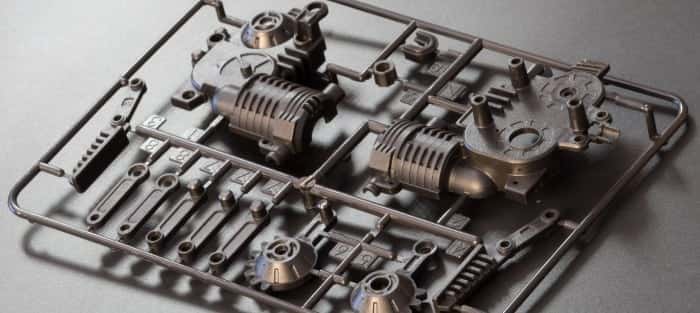
Credit : CRP Technology
